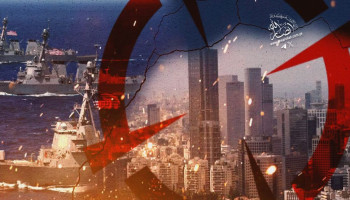The dust has yet to settle in Gaza, but signs of a strategic defeat for the Israeli enemy are becoming increasingly evident. The world now sees the reality that this entity is destined for collapse, as promised by divine will, reinforced by the steadfastness of the Palestinian resistance, enduring for over a year and three months. Hezbollah has forced Israel to agree to a ceasefire, exposing War Criminal Netanyahu’s promises of a "New Middle East" as mere illusions sold to settlers.
Lebanese Return Deepens Israeli Divisions
Images of Lebanese civilians returning to their southern villages despite threats have captured widespread attention from Zionist media and the families of detained combatants. In stark contrast, images of Zionist settlers returning north are conspicuously absent, as their government stalls, despite previous promises of absolute victory in Lebanon and Gaza.
The ceasefire in Lebanon is a significant victory for the axis of resistance, including Palestinian factions, though the loss of Hezbollah’s Secretary-General, Sayyid Hassan Nasrallah, remains a deep wound. However, the battle is far from over. The Zionist enemy continues to prevent families of more than 60 Lebanese border towns from returning home, with U.S. support and spreading threats of a renewed conflict. The announcement of U.S. Central Command" General Jasper Gievers" arrival in Beirut, heading the so-called "Ceasefire Implementation Mechanism," signals a potential escalation. Sayyid Abdulmalik Badruldeen al-Houthi, leader of the Yemeni Ansarullah movement, has called for leveraging Lebanon’s resistance achievements by escalating efforts in Iraq and Yemen.
Takfiri Groups in Syria: Tools for Redrawing the Map
The situation is highly sensitive, exacerbated by the resurgence of takfiri groups in Halab. This U.S.-Zionist-backed plan aims to sever logistical and military links between resistance fronts in Lebanon, isolating Gaza while offering the Zionist entity the chance to claim the “absolute victory” it failed to achieve over 13 months of aggression.
This renewed takfiri offensive in Syria aims to pressure Hezbollah into concessions, enabling U.S. political and security control over Lebanon, aiming to force the country into normalization with the Israeli entity, and preventing the resistance from regrouping. Zionist reports before the expanded assault on Lebanon suggested plans for military escalation from Syria, particularly towards the occupied Golan Heights. In response, groups like Jabhat al-Nusra have escalated attacks in Halab, exposing their coordination with the Israeli enemy, while remaining silent on the ongoing crimes in Gaza.
Regional Powers and Their Hidden Agendas
The role of regional actors such as Turkey and the Gulf states aligns with Zionist interests in Syria. The Zionist enemy seeks to punish Syria for supporting the resistance by distracting the Syrian army with peripheral battles and annexing more Arab land. Turkey aims to reshape regional geography to its benefit, while Saudi Arabia and the UAE view the Assad government’s survival as bolstering Iranian influence, undermining their political and security ambitions.
Despite these challenges, Hezbollah remains militarily strong, and the shift toward Syrian escalation reflects Israel’s desperation. This scenario could extend to Iraq and Yemen as the resistance axis continues its religious and humanitarian duty to support Gaza. The broader Muslim world must recognize its responsibility to counter attempts to dominate and exploit the region’s resources.








